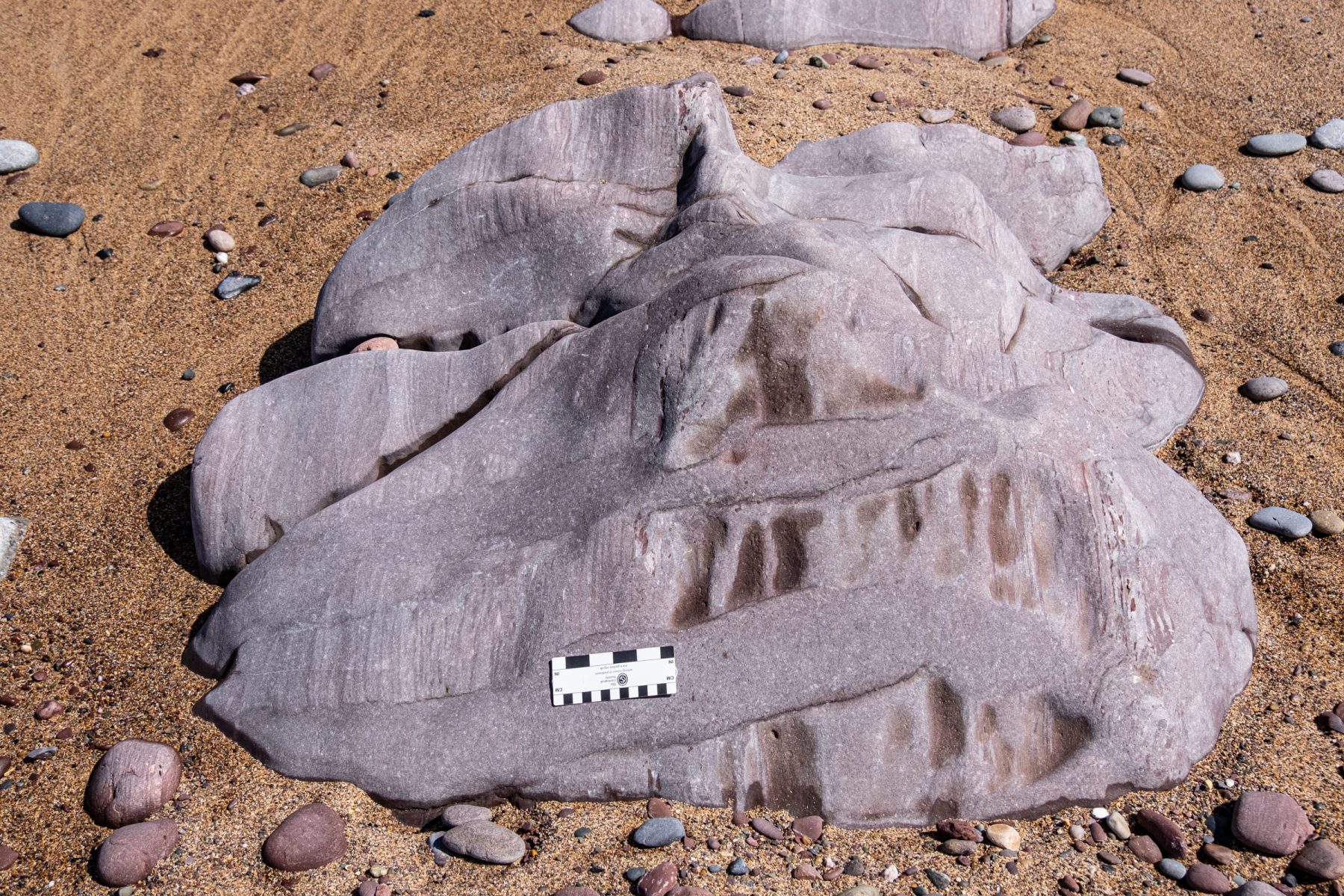Oct. 1st
Professor Peter Burgess, University of Liverpool
Presidential Address: Rocking the Geoscience Boat:
Using Numerical Models to Challenge the Status Quo.
Oct. 15th
Professor Nick Smith, National Nuclear Laboratory
Nuclear Power and the loudest noise ever recorded.
During daylight hours, Nick Smith is Head of University Engagement at the UK’s National Nuclear Laboratory (NNL), a role he took on in 2020, prior to which he was NNL’s lead geologist for over 15 years. A former Royal Society Industry Fellow, Nick has been NNL Fellow in geology and remote laser sensing for the last 10 years through which he continues to collaborate with universities (including Liverpool where Nick is Visiting Prof) leading and undertaking research on interesting geological issues. During this talk Nick will explore the geological knowledge and understanding that is required to underpin the siting, construction, operation, decommissioning and disposal of nuclear sites in the UK. The loudest noise ever recorded was not actually played by the rock band Nick used to be in, but what on earth has it got to do with the most important subject in nuclear? Come and find out!
Oct. 22nd
Professor Paul Barrett, Natural History Museum
The lives of giant dinosaurs
The biology of life at extreme size – touching on the issue of life spans.
| Geology of early ceramics Dr Peter Hommel from the Department of Archaeology, Classics and Egyptology is an archaeological scientist specialising in the study of ancient technologies and materials with extensive research expertise in the archaeology of northern Eurasia and a passion for public engagement. The title of Dr Hommel’s lecture is: How clay and human societies connect and how geology has helped us address some key questions about human development |
Nov. 12th
Doctor Dave McNamara, University of Liverpool
Exploring the mid Atlantic Ridge
In a 2 month expedition in the summer of 2023, the International Ocean Discovery Program drilled a transect of wells perpendicular to the Mid-Atlantic Ridge. A team of international scientists, including Dr David McNamara from the University of Liverpool, went to sea for eight weeks aboard the JOIDES Resolution, where they worked in its floating laboratory to analyse drillcore of contourite drift sediments draped across the Atlantic seafloor, as well as investigate the basaltic lavas forming the top of the Atlantic Oceanic crust. Dr McNamara will talk about his experience on this remarkable scientific expedition and present some of the team’s early findings on when Arctic waters first entered the Atlantic Oceans and how the basaltic Atlantic crust has hydrothermally interacted with the ocean over the last ~60 million years.
Nov. 19th
Chris Suddick, Altrincham and District Astronomical Society
How to measure the Universe
The talk looks at the different tools that we have used over the years to measure the Earth, the solar system, the stars and the galaxies. We then look at the methods at our disposal to implement these tools with practical examples to see them in action. The main focus is on the Earth and Moon as these are the most accessible to the amateur with no sophisticated equipment required.
14th Jan 2025
Jan. 14th
Professor Larry Barham, University of Liverpool
World’s oldest wooden structure
The discovery of well-preserved wood from Middle Pleistocene deposits in Zambia captured headlines last year. This talk places the discovery in the context of the ‘Deep Roots of Humanity’ research project (2017-ongoing) with its focus on the archaeological records at Victoria Falls and Kalambo Falls (https://www.liverpool.ac.uk/archaeology-classics-and-egyptology/research/projects/deep-roots/).
These two localities preserve long but discontinuous sequences of sands which have been challenging to excavate and date. The water-logged deposits at Kalambo Falls will feature given their importance for our understanding of the abilities of early humans to shape their surroundings.
Feb. 4th
Dr Kostas Kiriakoulakis, Liverpool John Moores University
Deep Sea Canyons
Submarine canyons are deep, steep-sided underwater valleys cutting into continental shelves and slopes, often extending from shorelines to abyssal depths. These large and widespread (>9,000 globally) geomorphic features are typically formed by a combination of tectonic activity and gravity flows, most commonly turbidity currents. Their morphology is also influenced by (internal) tides, ocean circulation and sediment supply; recent evidence suggests that anthropogenic activities may add to these. They serve as important conduits for the transport of natural and anthropogenic material to the deep ocean, often forming large deep-sea fans, and many of them host diverse ecosystems due to their complex physical and biogeochemical conditions. Submarine canyons can modify energy dissipation in their vicinity, occasionally affecting manmade installations, and they seem to influence marine ecosystem functions, such as primary productivity and carbon burial, and related ecosystem services such as fisheries and bioprospecting. Recent work has clearly shown that many of these features have been impacted by human activities, in the form of habitat destruction, pollution, ocean acidification and climate change. Understanding the functions, role and threats of submarine canyons remains a critical, yet undeveloped, area of marine research, with implications for broader ocean science and management.
Feb. 18th
Professor Tim Wright, University of Leeds
Satellite monitoring of our hazardous planet.
Nearly 1 million people have died as a result of earthquakes in the last 20 years, and hundreds of thousands of people have been evacuated from their homes due to volcanic activity. Across the planet, natural hazards continue to turn into disasters. In this talk, Prof Tim Wright will highlight the work of scientists in the UK’s Centre for the Observation and Modelling of Earthquakes, Tectonics and Volcanoes (COMET), who are at the forefront of international efforts to observe and monitor our hazardous planet from space. He will explain how satellites orbiting 100s of km above the earth can map movements from tectonics and volcanism with millimetre accuracy. And he will discuss how this critical information is helping decision makers around the world prepare for and quickly respond to earthquakes and eruptions.
Mar. 4th
Doctor Alastair Baird
The geological structure of central/northern Snowdonia (Eryri):
Significant modifications to the status quo.
As a result of extensive mapping and research by BGS geologists and affiliated geoscientists from the early 1970’s to the end of the Millenium, a complex story of Caradocian (Late Ordovician) volcanic and volcanoclastic structures and transtensional back-arc basins, followed by Acadian (Late Caledonian) deformation and metamorphism, has been generated and widely published. Brief summaries of this work appear in “The Geology of England and Wales (2006)” and “Geological History of Britain and Ireland (2012)”.
The presenter of this talk published a short paper on the structure of the Ogwen / Idwal area of Snowdonia in 1999. More recently, after Covid, having retired to north Wales, and whilst contemplating leading a Snowdonia field trip for another local Geol. Ass., the author joined a Liverpool Geol. Soc. trip to the same area. Whilst doing some preparatory reading for that trip, it became obvious that much of the published structural analysis for the region was illogical, unjustified and often simply nonsense. This realisation has resulted in him resuming geological fieldwork in the area.
In this talk, the current “orthodox” view (= the status quo) will be summarised before a fieldwork-justified alternative interpretation is presented. In this revision, the nature of Caradocian caldera structures, Caradocian transtensional “basin bounding” faults, the Acadian structural evolution including the cleavage-transected folds, polyphase deformation and the formation of the regional arcuate fold structure (= orocline) in north Wales will be discussed.
Mar. 11th
Doctor Maggie Williams, University of Liverpool
Practical Session: Ice ablation
Glaciers are large persistent bodies of ice that form where the accumulation of snow exceeds its ablation (i.e. melting) over many years. The process of snow becoming ice begins as the air gaps between snow crystals are squeezed out and filled in due to a combination the weight of subsequent snowfall and the refreezing of meltwater within the snowpack. This compacted and refrozen snow is called firn and it still contains pore spaces. Over time as it is buried further it is compacted even more so that any air left in the ice is compressed into bubbles, the density of the firn increases, and glacier ice is formed.


